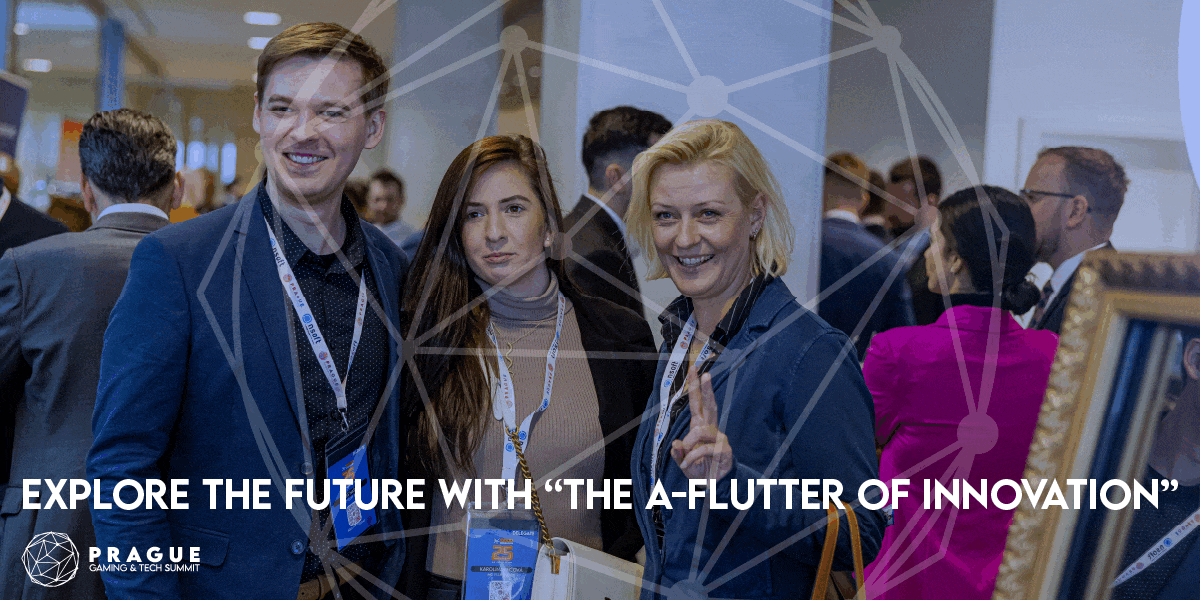Fintech PR
The Electrifying Divide in Battery Chemistries for Construction EVs

BOSTON, July 6, 2023 /PRNewswire/ — The success of electric vehicles in the construction industry will largely be determined by battery prices being low enough that the total cost of ownership is cheaper than diesel alternatives. IDTechEx’s new report, “Electric Vehicles in Construction 2023-2043“, shows that there is a battery price tipping point, under which it will be cheaper over the vehicle lifetime to operate an EV. Selecting the right chemistry then will be imperative for getting a low enough vehicle price. So why is a clear dichotomy seen between the batteries being deployed in China compared to Europe?
Electric vehicles in construction are an emerging market. Despite this, IDTechEx has built a database of more than 100 example makes and models across seven different construction vehicle categories. However, with lots of vehicles still yet to be released, only 49 database entries have confirmed chemistry information. With Europe and China being more established markets for electric construction vehicles, conclusions about battery chemistry trends from OEMs in these regions can be made. What is obvious at this early stage is that Europe heavily favors NMC, while China has chosen LFP.
Battery Requirements in Construction Vehicles
So why would one select NMC, LFP, or even lead acid, for that matter? Electrifying construction equipment is a fascinating and nuanced topic. The priorities for a battery are huge capacities at low costs. With some of these machines being gargantuan, and usually requiring concrete counterbalances to handle the massive loads they encounter, battery weight isn’t so much of an issue. Power density is also not much of a priority. Unlike electric cars, construction vehicles do not tend to have large spikes in power demand and are more likely to operate at a steady rate for a long time. As an example, the Tesla Model S has a ~60kWh battery and ~210kW motor power, meaning its battery must be able to deliver a peak of 3.5C (power divided by capacity). This is a typical requirement of road cars; hence, they tend to favor power-dense chemistries like NMC. By contrast, the Volvo L25 electric (an electric compact loader) has a battery capacity of 40kWh and a maximum motor power of 36kW, so the battery is only required to discharge at a maximum of 0.9C, well below road car expectations.
The same is true when you move to the really big stuff. The XCMG XE270E is a 27-tonne excavator leviathan with a battery capacity of 525kWh, but its motor is a measly 140kW (~0.27C). In fact, research in IDTechEx’s report, “Electric Vehicles in Construction 2023-2043“, shows that the vast majority of electric construction vehicles have a peak discharge requirement of less than 1C, with one quarter of vehicles requiring less than 0.25C peak discharge.
A low peak discharge requirement can be fulfilled by lead acid batteries, which is likely why it had a brief moment in the sun in the early days of construction electrification. The European examples that used lead acid were mainly from the mid-2010s, at which point lithium-ion technologies were still scaling and were much more expensive than lead acid. However, these vehicles were seriously limited, with low endurance and slow recharge times, making their use a challenge. Lead acid was quickly replaced with lithium-ion as it became more financially viable.
Both NMC and LFP offer the required performance for construction, happily coping with the peak discharging requirements and having high enough volumetric and gravimetric densities to fit in the machines. Speaking broadly, NMC tends to be a higher-performance battery than LFP, with better energy and power densities but coming at a premium. It would make sense then for the industry to select LFP. It offers all the needed performance while helping minimize the premium of building an electric vehicle, the number one priority for electric construction vehicles. Why, then, does the European market mostly use NMC?
Why is NMC dominant in Europe and LFP in China?
The best explanation is that it has been a case of availability. Most of the electric construction development so far has used battery pack suppliers, such as Northvolt, Forsee and Volta, and most of their products use NMC. IDTechEx’s research finds that over 75% of the offerings from European and North American pack manufacturers use NMC. These companies have been supplying a range of industries, including heavy-duty road vehicles like buses and trucks. These vehicles will have quite high peak power to deal with acceleration events, hills, etc. and will likely suit NMC better. IDTechEx speculates that this is why Europe has been mostly choosing NMC so far, but with battery pricing being a key factor in the success of electric construction vehicles, it is likely that there will be increased LFP uptake in the future.
Meanwhile, in China, LFP is already the dominant chemistry choice. China already has a good supply of LFP solution. This has risen as its vehicle fleet has rapidly been electrified, and it needed a cheap solution that could provide acceptable energy density (vehicle range) and keep the vehicle affordable. By contrast, European and North American electric vehicle markets have focussed on maximizing vehicle range, normally opting for the more expensive NMC and anticipating consumers will be more comfortable with the additional cost. This is good news for China’s electric construction industry, which has been able to build very large batteries relatively quickly and deploy some huge machines, such as the XCMG example already mentioned.
Unfortunately, there is not much data concerning which North American or APAC-based OEMs favor battery chemistries. This is mostly because OEMs in this region are only just beginning their electrification journeys. North America is a prime example; giants of the industry CAT and John Deere have made a recent push with electric construction vehicles showcased at BAUMA 2022, CES 2023, and CONEXPO 2023. However, these are still some years away from production, and battery chemistries are yet to be confirmed. However, an educated guess would suggest that CAT will likely use NMC for similar reasons to Europe.
Sodium ion, a Future Candidate?
Another possible contender for the construction industry is sodium-ion. This is an emerging chemistry and does not have an established market yet. The key thing to know is that sodium-based solutions can be produced at lower costs than lithium ones, but they will not have the same performance. In this respect, they share the qualities of LFP. The issue is that they are not yet a scaled solution, so they are more expensive than both LFP and NMC while having worse performance. Sodium, therefore, does not make sense in the construction industry for the time being. However, when scaled and delivering the promised price reduction, it could be a prime match for the needs of this nuanced market.
The electric construction industry is still nascent, with few vehicles in series production. However, if recent activity and announcements are to be believed, then the number of machines available in the next few years is going to explode. In IDTechEx’s report, “Electric Vehicles in Construction 2023-2043“, a 10-year CAGR of 37% is forecasted, with the electric construction machine industry growing to a value of US$150 billion in 2043. All of this growth is going to give rise to a significant battery demand, and whether it be NMC, LFP, or perhaps even Na-ion, the evolution of this industry is going to be electrifying.
IDTechEx Mobility Research
IDTechEx is actively researching autonomy and electrification and has just released a new report, “Electric Vehicles in Construction 2023-2043”. Find out more about this report, including downloadable sample pages, at www.IDTechEx.com/EVConstruction.
This research forms part of the broader mobility research portfolio from IDTechEx, who track the adoption of autonomy, electric vehicles, automotive semiconductors, battery trends, and demand across land, sea and air, helping you navigate whatever may be ahead. Find out more at www.IDTechEx.com/Research/EV.
About IDTechEx
IDTechEx guides your strategic business decisions through its Research, Subscription and Consultancy products, helping you profit from emerging technologies. For more information, contact [email protected] or visit www.IDTechEx.com.
Images download:
https://www.dropbox.com/scl/fo/muum7x2ll4n7fwwrih7mr/h?dl=0&rlkey=nnooghio882zw9sdy81iqfjqx
Media Contact:
Lucy Rogers
Sales and Marketing Administrator
[email protected]
+44(0)1223 812300
Social Media Links:
Twitter: www.twitter.com/IDTechEx
LinkedIn: www.linkedin.com/company/IDTechEx
Photo – https://mma.prnewswire.com/media/2147119/IDTechEX.jpg
Logo – https://mma.prnewswire.com/media/478371/IDTechEx_Logo.jpg
![]() View original content:https://www.prnewswire.co.uk/news-releases/the-electrifying-divide-in-battery-chemistries-for-construction-evs-301870208.html
View original content:https://www.prnewswire.co.uk/news-releases/the-electrifying-divide-in-battery-chemistries-for-construction-evs-301870208.html

Fintech PR
China’s AIMA brand electric motorbike is now in Bangladesh

DHAKA, Bangladesh, Nov. 23, 2024 /PRNewswire/ — With the popularity of electric vehicles in Bangladesh, the globally renowned AIMA brand has also arrived in Bangladesh. The esteemed DX Group has brought the AIMA F-626 to customers. This environmentally friendly battery-operated electric motorbike has already been approved by the Bangladesh Road Transport Authority (BRTA) now.
In light of the increasing popularity of electric motorcycles in the country, the internationally-leading brand AIMA has entered the market. By the end of 2023, AIMA electric two-wheelers had established a presence in over 50 countries worldwide, with 11 global production bases, including overseas factories in Indonesia and Vietnam. In 2022, AIMA collaborated with Rob Janoff, the designer of the Apple logo, to refresh the brand’s VI system with a youthful and fashionable image. In 2023, AIMA teamed up with PANTONE, the global authority in color expertise, to create the trending color of the year. As an industry leader, AIMA spearheads the electric two-wheeler sector and showcases the prowess of a leading electric two-wheeler brand on a global scale. As of March 31, 2024, AIMA’s total electric two-wheeler sales had reached 80 million units, earning certification from Frost & Sullivan, a globally recognized business growth consulting firm, as the “Global Leading Electric Two-wheeler Brand”.
Over the years, AIMA has always been a product trendsetter in the electric two-wheeler sector. As of March 31, 2024, the total sales volume of AIMA electric two-wheelers reached 80 million, and Frost & Sullivan, a world-renowned market consulting company, awarded AIMA with the market status certification of the “Global Leading Electric Two-wheeler Brand (by Sales)”.
AIMA adhere to the customer-centered product philosophy and technologies that support long-term innovation and breakthroughs. We believe that the efficiency and modern technology of the AIMA F-626 will present an excellent alternative means of communication for our customers.

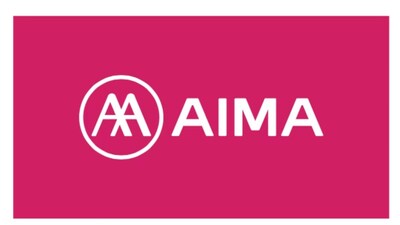
Photo – https://mma.prnewswire.com/media/2557788/image.jpg
Photo – https://mma.prnewswire.com/media/2565550/Image2.jpg
Logo – https://mma.prnewswire.com/media/2449955/5026987/AIMA_Technology_Logo.jpg
![]() View original content:https://www.prnewswire.co.uk/news-releases/chinas-aima-brand-electric-motorbike-is-now-in-bangladesh-302314773.html
View original content:https://www.prnewswire.co.uk/news-releases/chinas-aima-brand-electric-motorbike-is-now-in-bangladesh-302314773.html

Fintech PR
China Telecom Gulf Officially Launches in Saudi Arabia for Business

HONG KONG, Nov. 23, 2024 /PRNewswire/ — On November 21, China Telecom Gulf was officially launched in Riyadh. This milestone marks a significant step in China Telecom’s efforts to provide deep services under the “Belt and Road Initiative” and to promote the building of a “China-Arab Community with a Shared Future.” It signifies another solid advancement on China Telecom’s path toward internationalization. Mr. Liu Guiqing, Executive Director and EVP of China Telecom Corporation, delivered an opening speech, along with Mr. Fawaz, Representative of Contact Office of Chinese Companies in the KSA, Deputy General Manager of Industrial and Commercial Bank of China Riyadh Branch. Over 100 guests and leaders from the Economic and Commercial Office of Embassy of the PRC of the KSA, Saudi Telecom Company (STC), Bank of China, Huawei, and others attended to witness this momentous occasion.
In his address, Mr. Liu Guiqing emphasized China Telecom’s commitment to openness, cooperation, and mutual benefit. He expressed the company’s willingness to share its experiences in cloud-network integration, cloud transformation, intelligent operations, and technological innovation. China Telecom aims to work closely with various levels of Saudi governments, enterprises, and partners to actively participate in the development of local digital infrastructure, drive the rapid advancement of next-generation information technologies, and establish a robust bridge for cooperation between China and Saudi Arabia in the field of information technology. Leveraging its extensive resources and global operational capabilities, China Telecom plans to bring its strengths in 5G, cloud computing, artificial intelligence, and other fields to provide innovative, high-quality communication products and services to Saudi enterprises, institutions, and consumers.
Mr. Fawaz extended his warm congratulations on the opening of China Telecom Gulf. He highlighted that as a leading global provider of communication services, China Telecom possesses abundant cloud-network resources and mature international service capabilities. The establishment of China Telecom Gulf is a significant step toward supporting the digital transformation of businesses in the region. He expressed confidence that through joint efforts, the company will seize opportunities in the digital era and contribute to Saudi Arabia’s socio-economic development and practical cooperation between China and Saudi Arabia in various fields.
China Telecom showcased its global resources, business capabilities, and its investments and partnerships in the Middle East and Africa. Key services introduced included eSurfing Cloud, computing power solutions, quantum technology, and customized 5G networks. Currently, China Telecom operates branches in 42 countries and regions worldwide, owns 53 international submarine cables, and manages 27 self-operated Internet Data Centers (IDCs). Its cloud-network integrated infrastructure and customer-centric digital service systems provide coverage across the globe.
During the event, China Telecom Gulf signed strategic cooperation agreements with Saudi Telecom Company (STC), Huawei Saudi Arabia, and Baud Telecom Company. The parties committed to deep collaboration, leveraging their respective strengths to provide optimized and convenient digital experiences to Saudi customers.
The establishment of China Telecom’s presence in Saudi Arabia marks a major milestone in the company’s entry into the Middle Eastern communications market, representing a key development in its global strategy. Moving forward, China Telecom Gulf will leverage China Telecom’s robust digital infrastructure and resource integration capabilities. We will collaborate closely with local Saudi enterprises, Chinese businesses expanding internationally, and global companies to strengthen cooperation and enhance exchanges. The company aims to contribute to the growth of Sino-Saudi and Middle Eastern industrial cooperation, continuously offering more smart solutions for the development of the Middle East’s digital economy, while striving to become a world-class provider of digital and intelligent technology services.
Photo – https://mma.prnewswire.com/media/2566044/image_5024765_40051959.jpg
![]() View original content:https://www.prnewswire.co.uk/news-releases/china-telecom-gulf-officially-launches-in-saudi-arabia-for-business-302314765.html
View original content:https://www.prnewswire.co.uk/news-releases/china-telecom-gulf-officially-launches-in-saudi-arabia-for-business-302314765.html

Fintech PR
Redefining Financial Frontiers: Nucleus Software Celebrates 30 Years with Synapse 2024 in Singapore

SINGAPORE, Nov. 23, 2024 /PRNewswire/ — The thriving India–Singapore partnership in banking and technology reached a new milestone as Nucleus Software celebrated 30 years of transformative innovation at Synapse 2024, held in Singapore. The event underscored the company’s role in redefining financial services across Southeast Asia (SEA) and the globe, bringing together leaders in finance and technology to explore a shared vision for the future of banking.
Synapse 2024 celebrated 30 years of Nucleus Software’s leadership in driving transformative change across Singapore and Southeast Asia’s financial ecosystem. The event also shone a spotlight on the Global Finance & Technology Network (GFTN), an initiative supported by the Monetary Authority of Singapore (MAS) to champion responsible technology adoption. The event highlighted the deepening synergies between India and Singapore, driven by their shared commitment to innovation, cross-border collaboration, and financial inclusion. As the financial services sector undergoes rapid evolution with advancements in artificial intelligence, blockchain, and digital banking, these partnerships are setting the stage for a more connected, resilient, and inclusive global ecosystem.
Vishnu R. Dusad, Co-founder and Managing Director of Nucleus Software, reflected on the milestone: “For over 30 years, we’ve had the privilege of aligning our journey with Singapore’s ascent as a global financial powerhouse. Back in 1994, when we chose to go East instead of West, it was a bold and emotional decision—guided by our belief in Singapore as a hub for innovation and collaboration. We saw then what remains true today: Singapore is at the heart of the global financial landscape, a place where new ideas take root, and partnerships thrive.”
The event brought together a distinguished array of participants, highlighting the transformative potential of India–Singapore collaboration. Mr. Piyush Gupta, CEO of DBS Group and the Guest of Honor, set the tone for the event with his opening remarks, emphasizing the transformative role of big tech in reimagining scalable, customer-centric financial services in the digital age.
Following his address, key speakers enriched the discussions with their insights. Mr. Sopnendu Mohanty, Chief Fintech Officer at the Monetary Authority of Singapore and Group CEO-Designate of The Global Finance & Technology Network (GFTN), underlined the importance of fostering responsible technology adoption and building inclusive financial ecosystems. Mr. Vinod Rai, globally respected public policy expert, Distinguished Visiting Research Fellow at the National University of Singapore, and former Comptroller and Auditor General of India, shared his perspectives on governance and policy frameworks in financial systems. Mr. S.M. Acharya, Chairman of Nucleus Software and former Defence Secretary of India, offered a visionary outlook on leveraging technology to modernize and secure banking frameworks. Finally, Mr. Pieter Franken, Co-founder and Director of GFTN (Japan), a global FinTech pioneer and deep tech innovator, discussed the future of decentralized finance and its implications for the financial sector.
The event showcased the transformative role of technology in global financial systems, emphasizing innovations that set benchmarks for scalability and inclusivity. Panelists discussed the importance of localized solutions, the challenges of cross-border integration, and leveraging dual business models to optimize capital and foster public participation. The dialogue highlighted the need for common standards, unified frameworks like APIs, and collaborative efforts to accelerate financial inclusion and drive global connectivity in the digital age.
For 30 years, Nucleus Software has consistently introduced advanced lending and banking solutions that support financial institutions’ evolving needs in Singapore and South East Asia. Driven by lean development methodologies like Acceptance Test-Driven Development (ATDD) and Continuous Integration/Continuous Delivery (CICD), Nucleus Software continues to push boundaries in efficient, flexible, and secure financial technology.
Photo: https://mma.prnewswire.com/media/2565374/Synapse_2024.jpg
Logo: https://mma.prnewswire.com/media/2565373/Nucleus_Software_Logo.jpg
![]() View original content to download multimedia:https://www.prnewswire.co.uk/news-releases/redefining-financial-frontiers-nucleus-software-celebrates-30-years-with-synapse-2024-in-singapore-302314485.html
View original content to download multimedia:https://www.prnewswire.co.uk/news-releases/redefining-financial-frontiers-nucleus-software-celebrates-30-years-with-synapse-2024-in-singapore-302314485.html

-
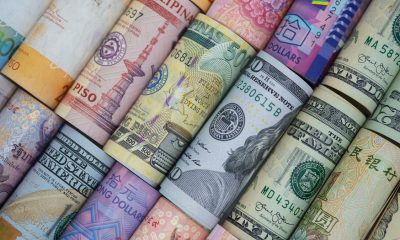
 Fintech3 days ago
Fintech3 days agoFintech Pulse: Industry Updates, Innovations, and Strategic Moves
-
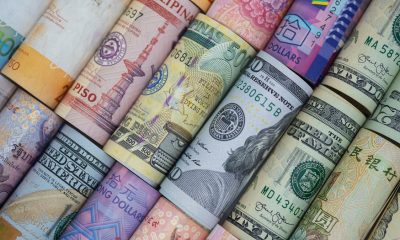
 Fintech2 days ago
Fintech2 days agoFintech Pulse: Daily Industry Brief – A Dive into Today’s Emerging Trends and Innovations
-

 Fintech PR3 days ago
Fintech PR3 days agoROLLER Releases 2025 Attractions Industry Benchmark Report, Unveiling Key Trends and Revenue Strategies
-
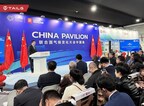
 Fintech PR3 days ago
Fintech PR3 days agoTAILG Represents the Industry at COP29, Advancing South-South Cooperation with Low-Carbon Solutions
-
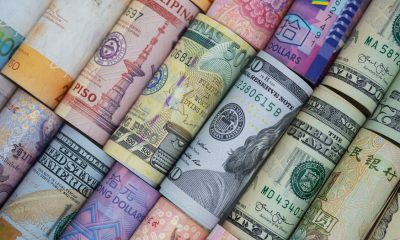
 Fintech5 days ago
Fintech5 days agoFintech Pulse: Navigating Expansion, Innovation, and Sustainability
-
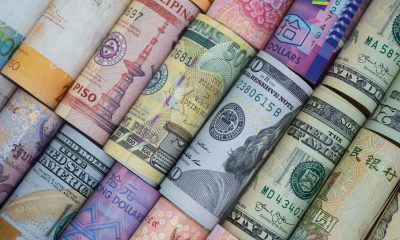
 Fintech4 days ago
Fintech4 days agoFintech Pulse: Milestones, Partnerships, and Transformations in Fintech
-

 Fintech PR3 days ago
Fintech PR3 days agoThe CfC St. Moritz Announces New Speakers from BlackRock, Binance, Bpifrance, Temasek, PayPal, and More for Upcoming 2025 Conference
-

 Fintech PR2 days ago
Fintech PR2 days agoCritical Metals Surge Opens Prime Opportunity for Mining Investors

